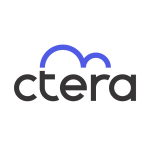The most valuable features for us are their document management list and hybrid forms. We also use third-party add-ons to achieve workflows and other recent apps.
One of the reasons why we don't recommend the cloud version of SharePoint is the cost. With the on-premise version, you pay for the license once. For the cloud version, there is a recurring fee.
The truth is there are some places where SharePoint is pretty decent for the thing that it does. Microsoft has a very good product. It's difficult to find room for improvement because you can get add-ons that support it. With SharePoint, if you are not subscribed to the SharePoint environment libraries, you can probably get third party tools that you can add on to it. It's difficult to see other tools that allow people to collaborate on documents and data in these libraries.
I think these tools do a pretty good job. There is only one area of improvement. Maybe Microsoft can invest a little bit more into the ease at which integration can be done with other third-party applications.
I know that Microsoft released SharePoint 2016, but I don't know if there is SharePoint 2019. We have only worked with the higher version of SharePoint since 2013. I don't know how much they have done in the area of integration. I think integration is a very important area of focus for SharePoint because it's very easy for SharePoint to become the go-to area, where everybody in your organization can come. Your costs, documents, sites, lists, and data can all be in one place. I would like to see them make it easier for people who are not using Exchange to connect to different data sources.
For example, a lot of people are using Google Apps. If I'm using Google Apps, there are plugins that we can just plug into SharePoint automatically to share documents and Google spreadsheets seamlessly. A Google spreadsheet can be imported into a SharePoint library. You can also point a SharePoint library to a Google spreadsheet, or the data source coming out of Google spreadsheet.
Integration also should include tools like Tableau, Salesforce, and some of the top software out there. It's not good enough to have website integration. That's not enough. You want to make an integration where Microsoft can build a wizard and you can just click a few times to create the integration. Then, just enter your username and password and point to the URL.
Those custom integrations are crucial, especially for smaller businesses. For large organizations that are deploying SharePoint in the enterprise, they already have an IT department, resources, and tons of administrators. They already have resources that can quickly build web services, called drivers or connectors. For small organizations, however, it would be good for Microsoft to invest in connectors. Microsoft can build and provide connectors for some of the more frequently used integrations, such as PayPal, Google Apps, Salesforce, SAP, etc. I think that would be great.
There is another area that Microsoft can improve on. I don't know what they have done with InfoPath. I think that's still a mystery. There's still a very big opportunity for form development and apps development framework that you can use quickly. Otherwise, Microsoft is telling everybody to go and buy two licenses to do serious forms of development. I think that's going to be a problem. I know that they're trying to encourage their partners to build those tools. However, workflows and easier to use and more robust forms infrastructure on top of SharePoint would go a long way. It is very expensive. They expect everyone to pay $20 or $30 per user per month. Microsoft can definitely help if they can build some of those capabilities, especially for people that want to invest in SharePoint. You're not investing much in to get some of the functionalities out.
We've been using this solution for eight years.
Most of our customers are enterprise customers. For enterprise customers deploying SharePoint, the setup is quite complex. If you don't know what you're doing, you can get yourself into trouble very quickly if you have a lot of data or users. It's very simple when you have a pair of small deployments. Then you can just click next a couple of times to engineer a solution. It's quite complex, however, if you have lots of users or you have terabytes of content. If you have a complex deployment, it gets very tricky and you have to get people who know what they're doing to be able to deploy even though there are challenges.
That's another big problem with Microsoft SharePoint because there was nobody to warn us and tell us at the beginning that, for enterprise deployment, we needed to think very carefully about certain things. It took us some time to build the competencies to understand the tricky areas. We had to learn what to do about performance and so many different things on an enterprise level.
The bottom line is that SharePoint is indeed for complex deployments. You just have to get the right team to be able to deploy it properly.
It's difficult to rate in general because there are so many different parts of SharePoint. As a personal collaboration, I would rate it as eight out of ten.









are there specific changes you would suggest to make the information/text more user friendly?